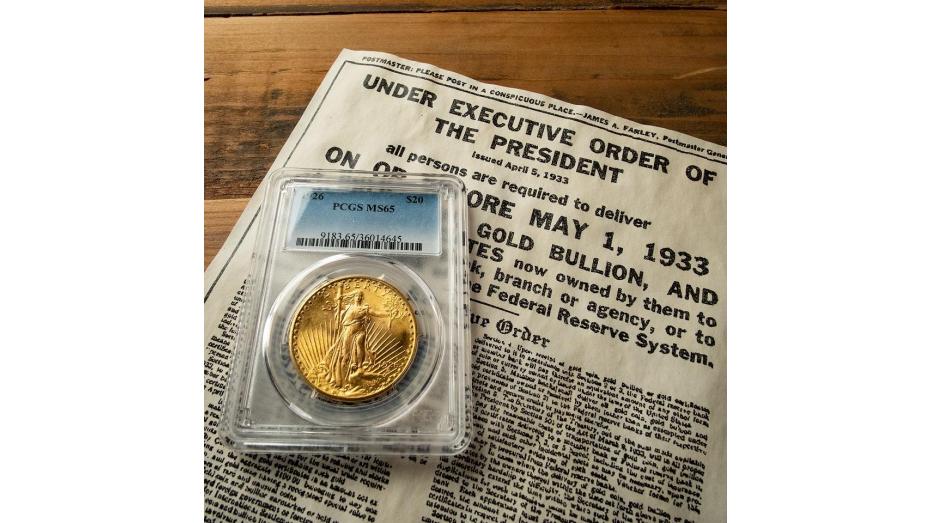The Lasting Effects of Executive Order 6102
Eighty-eight years ago, on April 5th, 1933, President Franklin Delano Roosevelt signed Executive Order 6102 into law. While there have been many laws passed that have affected the field of numismatics, Executive Order 6102 is perhaps the most important, as its effects are still felt to this day.
By 1933, the United States was deep in the midst of the Great Depression. The worst financial catastrophe our country has ever endured. The Depression saw unemployment rise to a staggering 23%, entire industries driven into bankruptcy, and a currency that teetered on the brink of collapse. Some of the worst casualties of the Great Depression were banks; in 1933 alone, there were an estimated 4,000 bank failures. Since this was a time before the Federal Deposit Insurance Corporation, any money in a failed bank was wiped out, leaving many penniless. Millions of people were left destitute by these failures and millions more feared that they would be next when their bank failed.
Many Americans, seeking to protect their financial well-being, sought alternative methods to store their wealth. Knowing that the value of paper money could fluctuate or collapse entirely, they began trading their printed currency for gold coinage instead. Historically, gold has always maintained its value, making it the perfect investment for someone hoping to preserve their wealth. By 1933, thousands of Americans had removed their money from the banking system, and preserved it in privately-owned gold.
While doing so is understandable, given the fears of the time, this hoarding only exacerbated the effects of the Great Depression. With more money being hoarded and less being spent, there was even less financial activity in the country, causing further damage to the American economy. To prevent hoarding and encourage the circulation of money needed to revitalize the economy, President Roosevelt signed Executive Order 6102 into action on April 5th, 1933. The law forbade owning more than $100 worth of gold coins, bullion, or gold certificates, and required individuals to deliver any excess gold to the U.S. Mint in exchange for the precious metal’s melt value. People caught in violation of this law could face a $10,000 fine, up to ten years in prison, or even both.
The reason that President Franklin Delano Roosevelt enacted this executive order was to be able to print more money. At the time, the government could only print an amount of money equal to the quantity of gold that was held. FDR had already printed the maximum amount of money possible, so by instating Executive Order 6102, he was able to reclaim gold from the American people and print more currency. As a result of this act, the government’s gold supply tripled, and three times as much currency was able to be printed. Since the people that were trading in their gold were afraid that their paper money would lose value, they would quickly spend it. In turn, this money acted as a way to boost the economy during the Great Depression.
The consequences of this executive order are still felt by the numismatic community to this day. Millions of coins were melted down due to Executive Order 6102, with some denominations becoming more difficult to acquire and some issues becoming all but impossible to find.
Percentage of Coins Melted under Executive Order 6102
$20 = 39%
$10 =47.15%
$5 =33.67%
$3 = 10.8%
$2.5 = 15.69%
$1 = .16%
The melting most heavily affected coins from the most recent issues. Since there was so little economic activity at the time, coins from the last several years of striking had barely circulated, sitting unused in vaults. These coins were the first to be sent to the smelter, practically obliterating entire issues. The $20 1932 double eagle, for instance, has less than 100 known examples in all grades. The $20 1933 double eagle has just thirteen surviving examples, with only one of those coins in private ownership.
While Executive Order 6102 was ultimately necessary, the loss of so many gold coins has made collecting series like the $20 Saint-Gaudens or $10 Indian Head that much more difficult. Fortunately, Rare Collectibles TV offers a wide range of stunning gold coins preserved in Mint State condition, some of the finest numismatic treasures on the market.






